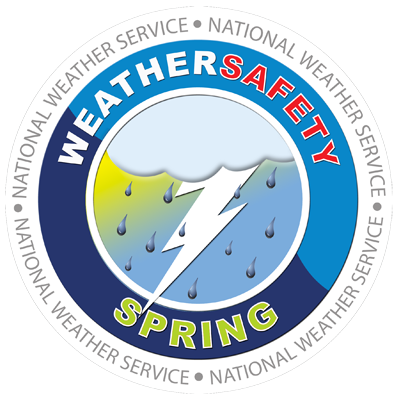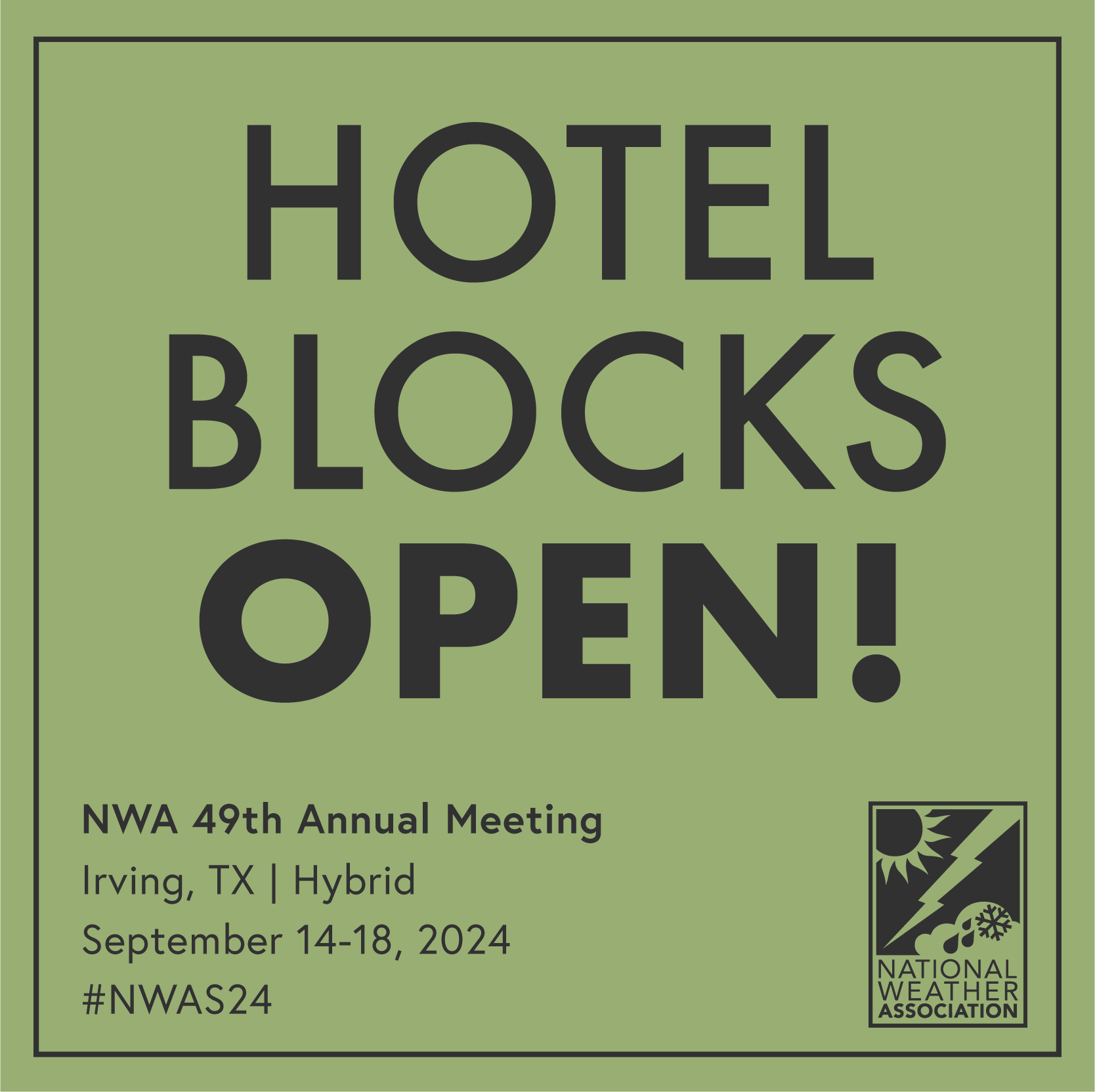|
NWA November/December 2021 Newsletter
Issue 21 - 11-12
What's in this newsletter:
President's Message
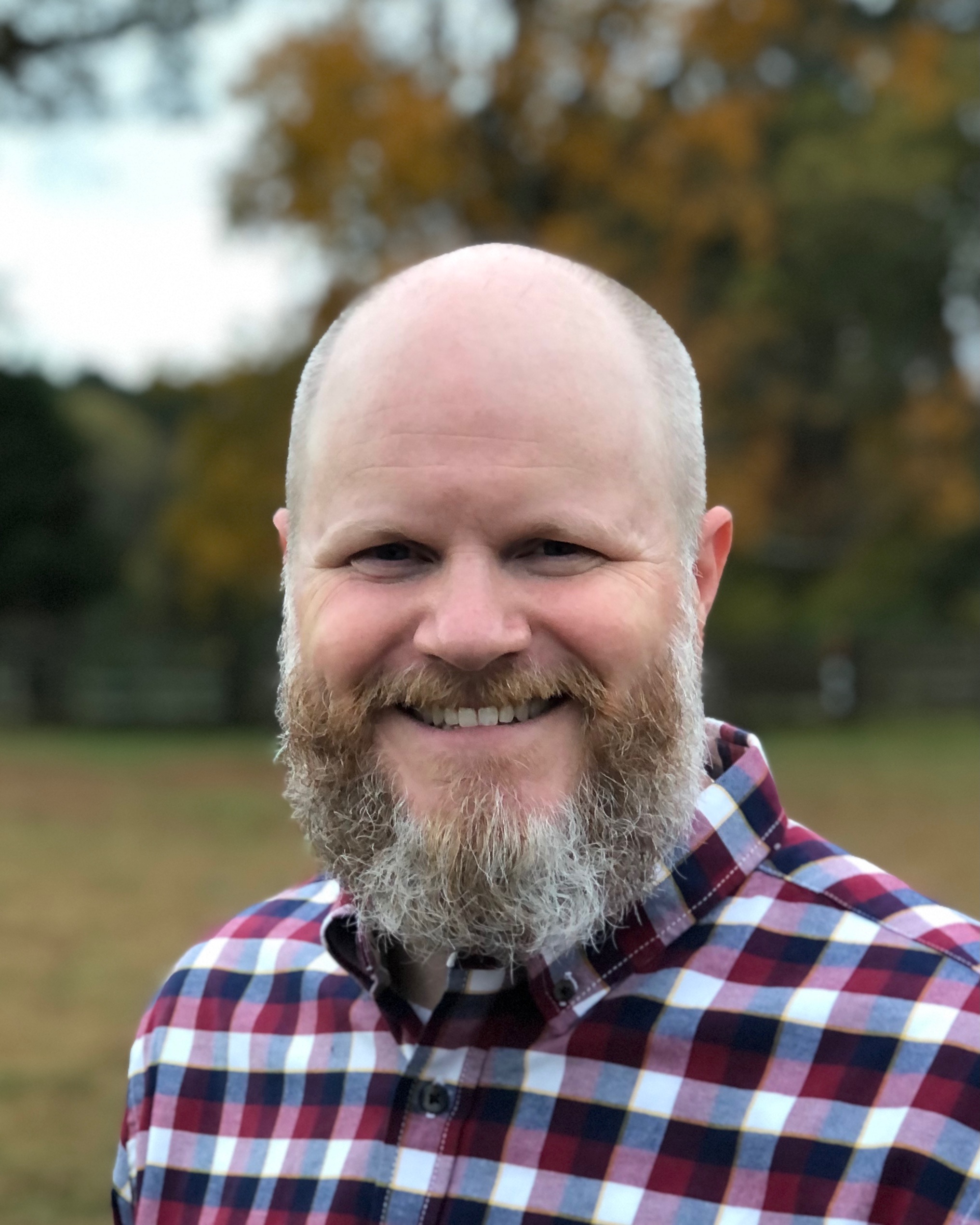 We are winding down an eventful year, and like many of us, I find myself taking stock of the last 12 months while looking ahead at the year to come. Between the ongoing pandemic, economic changes, and more, there has been no shortage of challenges in 2021. There have been several times over the past two years when our finances could have taken significant pandemic-related hits. However, a proactive approach over that time helped us weather the storm and put us in a strong position for the future. Our membership numbers remain strong, and all of our key programs enjoyed an active year. Thanks to the leadership and hard work of the board of directors, our committees, and our headquarters staff, the National Weather Association is in a great place as we close out 2021. We are winding down an eventful year, and like many of us, I find myself taking stock of the last 12 months while looking ahead at the year to come. Between the ongoing pandemic, economic changes, and more, there has been no shortage of challenges in 2021. There have been several times over the past two years when our finances could have taken significant pandemic-related hits. However, a proactive approach over that time helped us weather the storm and put us in a strong position for the future. Our membership numbers remain strong, and all of our key programs enjoyed an active year. Thanks to the leadership and hard work of the board of directors, our committees, and our headquarters staff, the National Weather Association is in a great place as we close out 2021.
Clearly, the biggest achievement of the past year was our annual meeting. Both in-person and remote attendees agreed that the meeting was a success. For those able to attend in person, it was excellent to interact and be “in the room” for the first time in a year and a half, and all attendees were treated to an excellent agenda and well-produced event that went smoothly and without the “you’re on mute!” and “can you see my screen?” comments that have become all too common in the remote-work world. This was the first large-scale in-person meeting in the weather enterprise since the beginning of the pandemic, and other organizations are looking to our approach as they plan hybrid and in-person meetings for 2022 and beyond. I am beyond proud of the team that made this happen, and I hope you are, too.
We are more than our annual meeting, of course. Thanks to a generous sponsorship, we were able to host — with free registration — an online conference for students and early-career professionals. We offered the Research-Operations Nexus (RON) online, also as a free event. Our Seal of Approval program is having a banner year with ten weathercasters earning their TV Seals of Approval. We’ve published eight new articles to our Journal of Operational Meteorology and introduced a new submission type, the Forecaster’s Toolbox. Our webinar team has offered webinars covering topics from heat to serving deaf and hard-of-hearing populations. And of great importance to our weather enterprise, the NWA has signed letters supporting the protection of critical radio-frequency spectrum to ensure the reliability and continuity of satellite-based observation and data relay.
It’s been a busy year.
Looking ahead to 2022, there are two big things I’d like to highlight.
First, the headquarters team is putting the finishing touches on a new online benefit to your NWA membership. The new platform will work seamlessly with your existing NWA online login and will host our member groups, webinars, recordings of presentations and electronic posters from our annual meetings, and more. (And behind the scenes, we will be able to leverage this platform to replace some external services we currently pay for, resulting in some savings in our budget - an excellent side benefit!) It will be the hub for all things NWA online, and we are excited to roll that out. That should happen early in the year.
Second, we are hopeful for an even larger in-person component to our annual meeting, but we are planning to offer another hybrid option to include attendees and presentations from folks who may not be able to attend otherwise. (By the way, the team is working feverishly on nailing down the dates and location for the annual meeting. As you can imagine, the pandemic has slowed this process down more than we would like. I am excited about the options! NWA has never held its annual meeting in any of the three finalist locations.) Furthermore, we are using the feedback from the meeting survey, as well as what we learn from other organizations in and outside the weather enterprise, to think about how we can innovate to deliver the right kind of meeting experience in the future. I am excited about the possibilities here.
I have a few more weeks left as the president of the National Weather Association, but as this is my final president’s message, I want to take this opportunity to say serving the NWA as president this year has been a privilege and an honor. With your help, our team of directors, staff, and volunteers has worked hard to build upon a strong foundation and put the NWA in a better position as we look ahead to 2022 and beyond, and I believe our efforts have met with great success. I am grateful for the opportunity to serve you, and I am looking forward to what comes next for the NWA. Thank you.
Return to Top
December 2021 Severe Weather Message
***As we were putting the final touches on this Newsletter, severe weather, extremely high winds and wildfires were raging across the middle of the U.S. Even though the message focuses on the events of December 10-11, it goes out to all who have been impacted by high-impact events this month and in 2021.***
Our hearts go out to all those impacted by the December 10-11, 2021, severe weather outbreak. We know many of you put all your efforts into the live-saving forecasts, warnings and communications before and during the event. We also know that the work did not stop there. Many of you are still reporting, doing damage surveys, cleaning up damage to your home or those of friends and family, and sharing information to help people pick up the pieces.
The outlooks, forecasts and warnings were incredibly good. Many people are stating that they got the warning and took shelter. Still, it is devastating to learn of so many deaths and to see so much destruction. After all, NWA members and others who span roles from meteorologist to first responder and volunteer are tremendously dedicated to doing all they can to save lives. We still do not know how many lives were saved, but it is safe to say countless lives were spared thanks to your dedication, passion and skills.
It can be overwhelming to watch or be a part of these big events. If you are finding it difficult to deal with the aftermath, please do not hesitate to reach out to friends and to medical or mental health professionals. Consider taking a break to do something that brings you joy such as watch a movie, read a book or listen to your favorite music. This is tough work, and we all need a break and help from time to time. A few resources for assistance are listed below. Many employers offer Employee Assistance Programs. Please don’t hesitate to reach out to these resources for help.
There will be much to learn from this event and opportunities to share the lessons learned with others. We look forward to hearing more about what worked well, what needs improvement, and ways our members can collaborate to advance our science.
On behalf of the NWA and NWA Foundation, we wish you all peace and comfort through these events and the holiday season. We look forward to connecting with you in 2022.
Janice Bunting
CEO
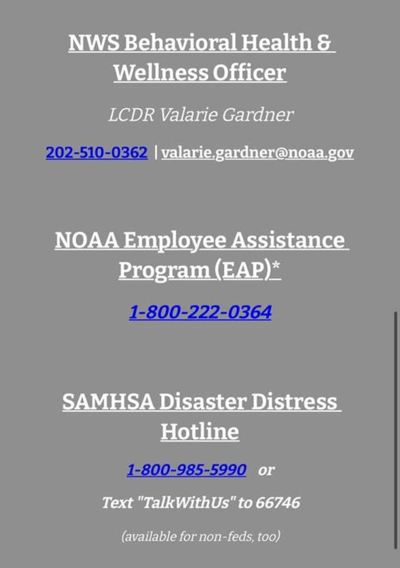
This option is available to everyone:
SAMHSA: https://www.samhsa.gov/find-help/disaster-distress-helpline
These two options are for NOAA/NWS only:
Valarie Gardner: https://sites.google.com/a/noaa.gov/nws-insider/nws-behavioral-health-wellness
NWS/NOAA EAP: https://sites.google.com/noaa.gov/ohcs/employee-resources/work-life-resources/workplace-programs/employee-assistance-program-eap
Return to Top
2022 NWA Election Results
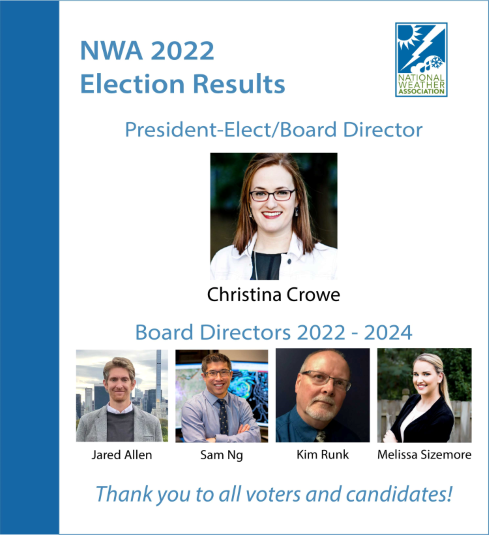
The newly elected board members will serve in 2022, along with the following members:
2022 President Kathy Sherman-Morris
Vice President Trevor Boucher (Elected by the Board.)
Treasurer Bryan Wood
Secretary Bryan Karrick
Immediate Past President Nate Johnson
Trevor Boucher
Bryan Busby
Katurah McCants
Hannah Strong
Sean Sublette
Commissioner of Committees (non-voting) Stephen Kearney
The 2020 President Todd Lericos and 2020-2021 Vice President Becca Mazur will rotate off the Board at the end of 2021. We thank them both for their leadership, dedication and many contributions.
Return to Top
Meet the New Seal Holder Stephanie Sine!
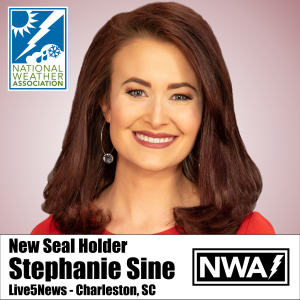
Stephanie Sine is with Live5News in Charleston, South Carolina.
What sparked your interest in meteorology?
Snowfall! While growing up in the Appalachian Mountains, my hometown was placed in a valley that always missed major snow events. This inspired me to find out WHY a town 20 minutes from me got 5" of snow, while I ended up with dusting. I remember being in elementary school, staring out the window late at night, watching the street lights for the first flakes! I've been hooked ever since.
What is the most memorable weather event you have covered on air?
The Mid-Atlantic blizzard of 2016. Our highest measurement (including drifts) was 46" of snow. I had to walk to my live shot from my house in over a foot of snow that morning.
What do you love to do in your free time?
I play video games, hang out with my backyard flock of chickens, play with my cats and dogs, and stream all things true crime! My husband and I have a Boxer and a Great Dane/Bloodhound mix, so they keep us pretty busy. I also have about 35 indoor plants - I love plants!
Do you have any unusual/hidden talents?
Most people don't know that I can play the xylophone and marimba! I also played violin for 10 years. I also used to be in the hand bell choir in church!
What do you love most about being a member of the NWA?
The community! In broadcast meteorology, it's easy to feel very separated from your fellow atmospheric scientists in other fields. The NWA brings us together!
The qualifications and procedures to earn an NWA Seal are located on the NWA Seal webpage.
Return to Top
Two New JOM Articles Published
JOM: Communicating Probability Information in Hurricane Forecasts: Assessing Statements that Forecasters Use on Social Media and Implications for Public Assessments of Reliability
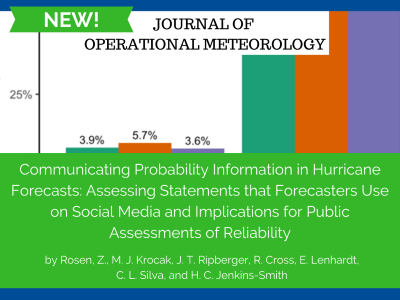
Authors for this new JOM Article are Zoey Rosen, Makenzie J. Krocak, Joseph T. Ripberger, Carol L. Silva, Hank C. Jenkins-Smith, Rachel Cross and Emily Lenhardt.
Abstract:
Forecasters are responsible for predicting the weather and communicating risk with stakeholders and members of the public. This study investigates the statements that forecasters use to communicate probability information in hurricane forecasts and the impact these statements may have on how members of the public evaluate forecast reliability. We use messages on Twitter to descriptively analyze probability statements in forecasts leading up to Hurricanes Harvey, Irma, Maria, and Florence from forecasters in three different groups: the National Hurricane Center, local Weather Forecast Offices, and in the television broadcast community. We then use data from a representative survey of United States adults to assess how members of the public wish to receive probability information and the impact of information format on assessments of forecast reliability. Results from the descriptive analysis indicate forecasters overwhelmingly use words and phrases in place of numbers to communicate probability information. In addition, the words and phrases forecasters use are generally vague in nature -- they seldom include rank adjectives (e.g., “low” or “high”) to qualify blanket expressions of uncertainty (e.g., “there is a chance of flooding”). Results from the survey show members of the public generally prefer both words/phrases and numbers when receiving forecast information. They also show information format affects public judgments of forecast reliability; on average, people believe forecasts are more reliable when they include numeric probability information.
JOM: A Coastal Flood Event Database for the Southeastern Georgia and Southeastern South Carolina Coast and the Operational Implementation of a Tide Forecast Tool
The author of this new JOM article is Blair S. Holloway of the NOAA/National Weather Service in Charleston, South Carolina. 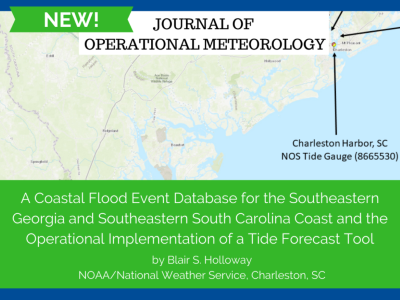
Abstract
Coastal flooding occurs when saltwater inundates normally dry land and the resulting impacts can range from minor flooding of low-lying areas along the coast, to significant damage to property and structures. Previous research consistently suggests that if sea-level rise continues to increase along the East Coast of the United States, coastal flooding will occur more frequently. In order to document the history of coastal flooding along the southeastern Georgia and southeastern South Carolina coast, a coastal flood event database was created for National Ocean Service tide gauges located in Charleston Harbor, South Carolina and Fort Pulaski, Georgia.Trends from the data show that coastal flooding is occurring more frequently with time at both tide gauges, particularly over the last five to ten years. Because of the increased frequency and worsening impacts of tidal flooding, a tide forecast tool is implemented operationally in an effort to improve deterministic tide forecasts. This study extends the dataset used in the Charleston Harbor forecast tool, expands the tool to Fort Pulaski, and compares the synoptic category forecast equations to an all-inclusive equation that does not differentiate by synoptic category. Results show that there is virtually no difference in the forecast accuracy between the all-inclusive forecast equation and the specific forecast equations based on synoptic category. Furthermore, the all-inclusive forecast equation can be implemented operationally, will help improve deterministic tide forecasts, and will likely aid in the decision-making process for Coastal Flood Watches, Warnings, and Advisories issued by the National Weather Service office in Charleston, South Carolina.
See other items published in the JOM, and the instructions for authors here.
Return to Top
Jobs Corner

We update the job postings as they arrive, and they've been arriving more frequently. Check out the newest job postings or submit a job posting here.
Return to Top
On The Turning Away, Part II: Combatting Compassion Fatigue in Meteorology
Matthew J. Bolton
College of Arts and Sciences, Saint Leo University
 I recently wrote an NWA Newsletter article (October, 2021) for awareness of compassion fatigue: a long-term, elevated sense of emotional, physical, and/or spiritual distress at the witnessing of others’ suffering (Barnett 2014; Bolton 2021). I noted that amidst the COVID-19 pandemic and recent weather disasters, there seems to be a shift underway for many meteorologists towards this fatigued state, a turning away from the weather-related needs of the publics they serve. Here, I discuss aspects of care for meteorologists who are experiencing compassion fatigue. I recently wrote an NWA Newsletter article (October, 2021) for awareness of compassion fatigue: a long-term, elevated sense of emotional, physical, and/or spiritual distress at the witnessing of others’ suffering (Barnett 2014; Bolton 2021). I noted that amidst the COVID-19 pandemic and recent weather disasters, there seems to be a shift underway for many meteorologists towards this fatigued state, a turning away from the weather-related needs of the publics they serve. Here, I discuss aspects of care for meteorologists who are experiencing compassion fatigue.
To start, awareness of one’s experience is crucial. A compassion-fatigued person, dimmed to inner and outer experiences, perceives a less vivid, lower-resolution world. Compassion fatigue numbs us; it disconnects us from friends, family, work, and, most importantly, our sense of self. Our sense of who we are and everything flowing outward from that, down to our sense of purpose and sources of meaning in the world, becomes shallow when we are in this state. Thus, the first step in counteracting compassion fatigue is to return to ourselves.
Psychologist Tara Brach (Brach 2019) introduced the R.A.I.N. method to mindful self-awareness, which can be used in our day-to-day lives: Recognize what’s going on; Allow the experience to be just as it is; Investigate with interest and care; and Nurture with self-compassion. As Brach (2020) put it, “Recognizing means consciously acknowledging, in any given moment, the thoughts, feelings, and behaviors that are affecting you…Allowing means letting the thoughts, emotions, feelings, or sensations you have recognized simply be there, without trying to fix or avoid...To investigate, call on your natural curiosity and direct a more focused attention to your present experience. You might ask yourself: ‘What most wants attention? How am I experiencing this in my body? What am I believing? What does this vulnerable place want from me? What does it most need?’ Self-compassion begins to naturally arise in the moments that you recognize you are suffering. It comes into fullness as you intentionally nurture your inner life with self-care.”
Once we have a felt sense of ourselves in this way–and this is something we might have to continually practice with self-compassion–we can begin again. We can use R.A.I.N to ground ourselves in any moment simply by focusing on our breath, on our feet on the floor, on any inner sensation or part of our body in contact with the outer world–noticing and then simply letting be whatever arises before moving on to the next moment. We can then more effectively manage our day-to-day stressors and engage a wider pattern of self-care involving time off from work, socializing, relaxation, favorite activities, and the like. We can, if needed, use this in conjunction with therapy or medication. Whatever action we need to alleviate compassion fatigue, we can only truly begin once we have acknowledged that we are, indeed, compassion-fatigued. R.A.I.N. allows us, through pure self-awareness as part of wider trauma stewardship (van Dernoot Lipsky and Burk 2009), to move towards healing and integration.
Author note: Correspondence regarding this manuscript should be addressed to Matthew Bolton, College of Arts and Sciences, Saint Leo University, Saint Leo, Florida. Email: [email protected]. Bolton, a crisis counselor and Master’s candidate in psychology pursuing a career in natural disaster psychotherapy, was supported academically during the period of this work by a U.S. National Weather Service-sponsored and American Meteorological Society-awarded Graduate Fellowship. The views expressed here are the author’s alone.
References
Barnett, J. E., 2014: Distress, therapist burnout, self-care, and the promotion of wellness for psychotherapists and trainees. Society for Psychotherapy. https://societyforpsychotherapy.org/distress-therapist-burnout-self-care-promotion-wellness-psychotherapists-trainees-issues-implications-recommendations/
Bolton, M. J., 2021: On the turning away, part I: Recognizing compassion fatigue in meteorology. National Weather Association Monthly Newsletter, 21(10). https://www.mattbolton.me/papers/Bolton_2021_NWA-meteorology-compassion-fatigue-1.pdf
Brach, T., 2019: Radical compassion: Learning to love yourself and the world with the practive of RAIN. Penguin Books.
Brach, T., 2020: RAIN: A practice of radical compassion. https://www.tarabrach.com/rain-practice-radical-compassion/
van Dernoot Lipsky, L., and Burk, C., 2009: Trauma stewardship: An everyday guide to caring for self while caring for others. Berrett-Koehler Publishers, Inc.
Return to Top
NWA 2021 Award Winners
Congratulations to all winners. Click here to watch the awards ceremony.
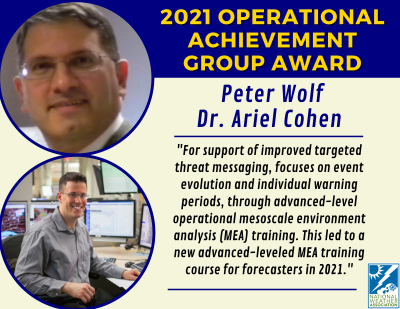 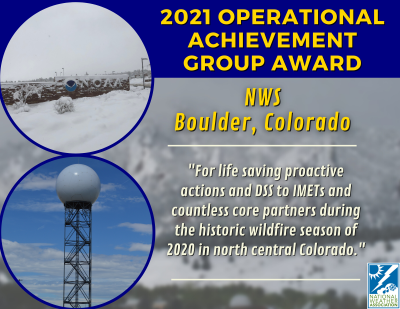
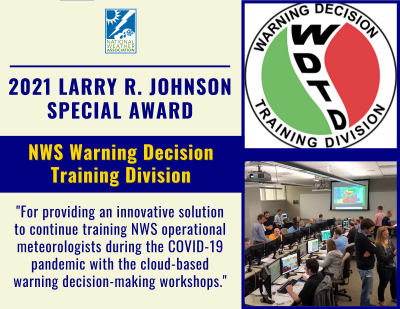 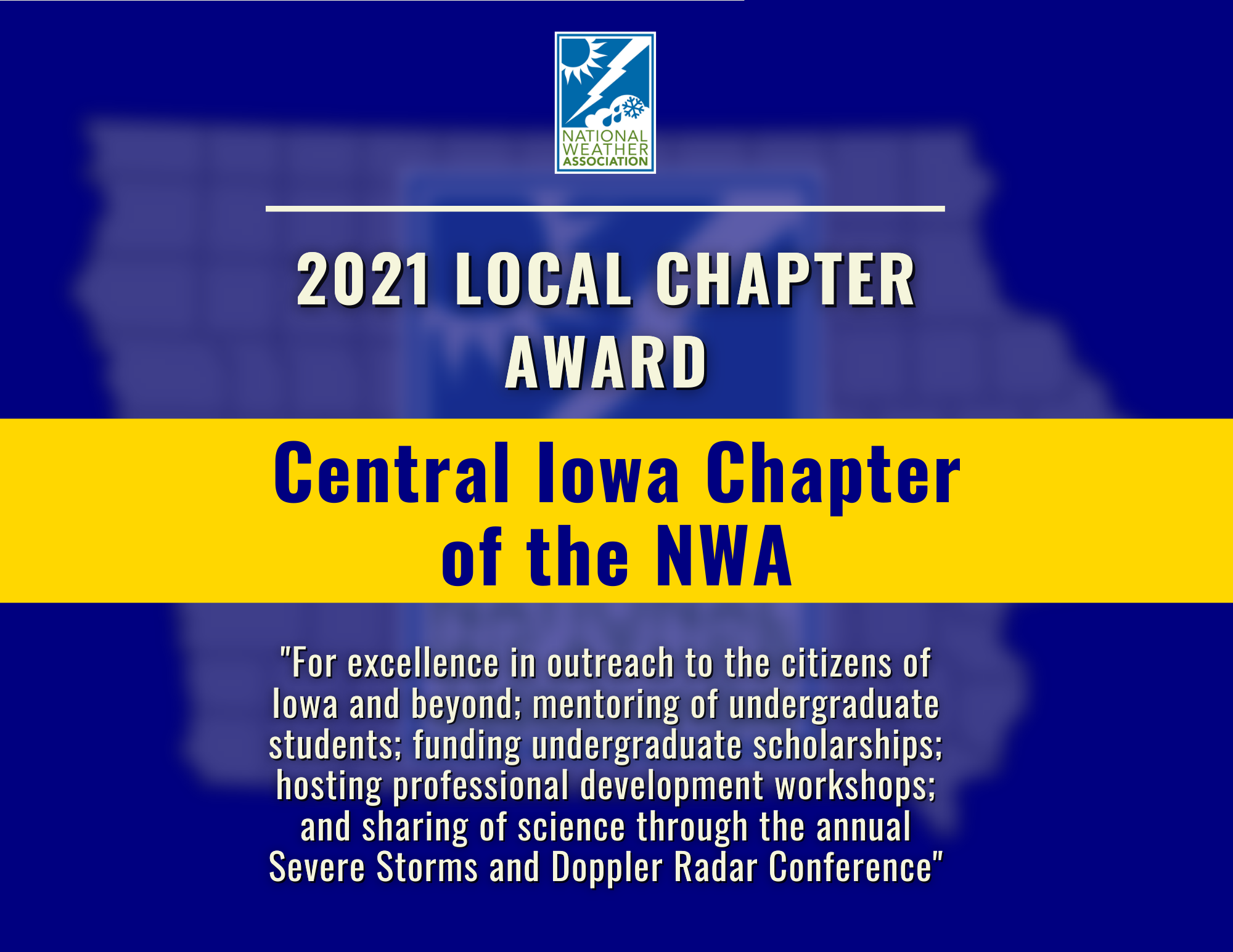
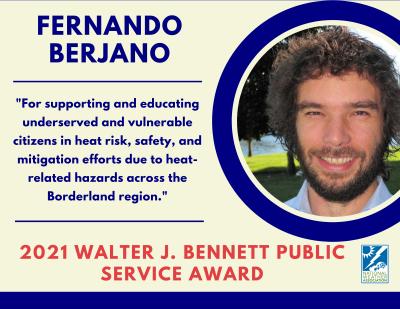 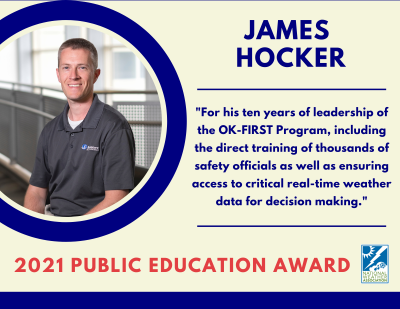
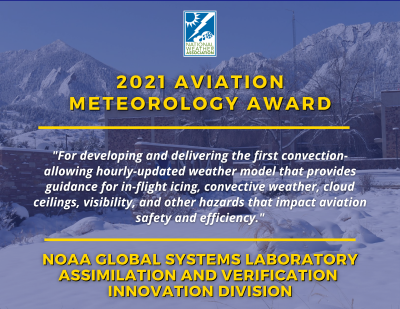 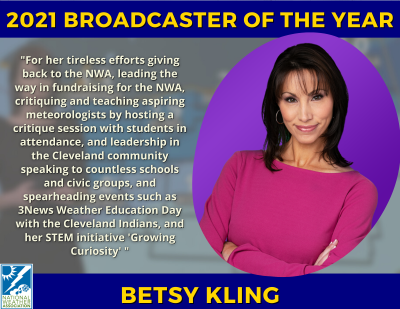
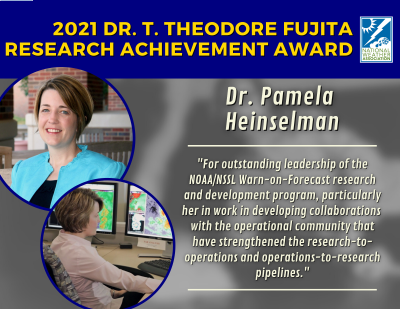 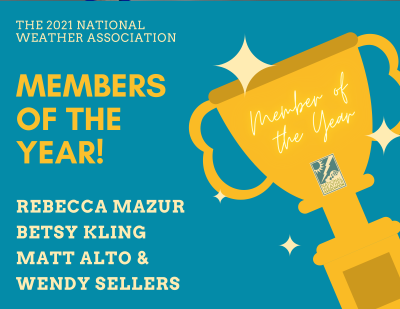
Return to Top
Baron Weather, Inc. Announces Bob Dreisewerd as New CEO
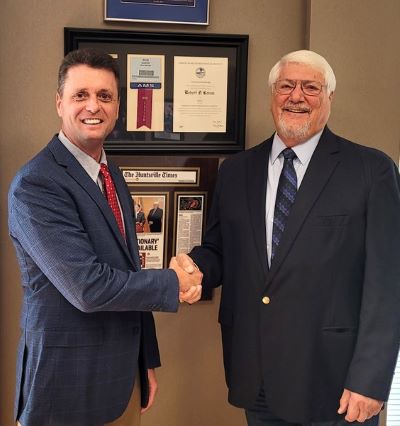 The NWA congratulates Bob Dreisewerd on his new position, and we wish Mr. Bob Baron continued success with his non-profit Baron Critical Weather Institute and as Baron Weather Board Chair. The NWA congratulates Bob Dreisewerd on his new position, and we wish Mr. Bob Baron continued success with his non-profit Baron Critical Weather Institute and as Baron Weather Board Chair.
Huntsville, AL – Robert “Bob” Baron founder and CEO of Baron Weather, Inc. announced today that he has named Bob Dreisewerd President and CEO. Dreisewerd, a 15-year veteran of Baron management, brings a wealth of experience to his new role combining a strong technology and weather background with savvy business acumen. Baron Weather, a worldwide leader in weather intelligence, is best known for weather analytics and display solutions, weather radar systems, and advanced modeling solutions that help organizations solve weather problems with critical insights.
In his role as Chief Development Officer, Dreisewerd was instrumental in successfully guiding development and launching many of the company’s premier product offerings. Notable examples include the versatile Developer’s Weather API for real-time and historical data analysis, Baron’s Dual Polarization GEN3 weather radar solutions and the very popular Baron Lynx, a visually stunning weather storytelling platform used by hundreds of national and local broadcast television outlets across North America.
“Baron Weather will continue to focus on developing innovative weather solutions and accelerate growth by leveraging emerging technologies, developing new weather decision support solutions, and establishing additional strategic partnerships,” said Bob Dreisewerd.
“It is an appropriate time to pass the torch to a new generation of leadership whose talent and energy will build our success going forward,” said Bob Baron. “We are committed to growing the business long term and I have complete confidence in Bob’s leadership skills, business insights and firm understanding of technology,” Baron added.
Please see this press release from Baron Weather to learn more.
Return to Top
Native American Heritage Month
The NWA celebrates Native American Heritage month. Find more information about this month here.
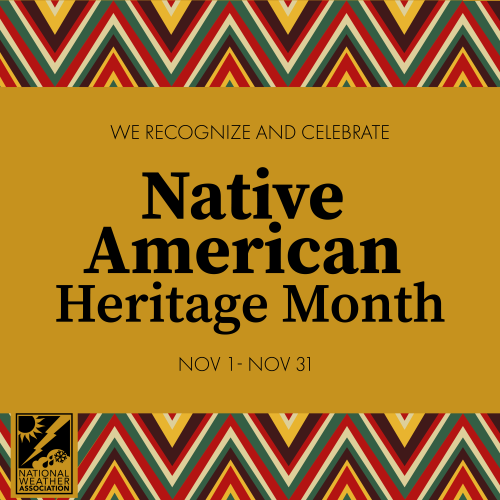
Return to Top
Happy Holidays!
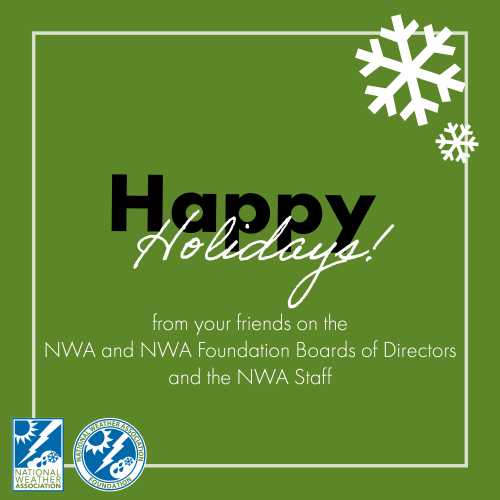
Return to Top
Thank You for a Great Year!
We look forward to having you as a member in 2022, so please remember to renew your membership.

National Weather Association | 3100 Monitor Ave, Suite 123 | Norman OK 73072 | 405.701.5167
Publisher: Janice Bunting, NWA CEO
Technical Editor: Winnie Crawford
Content Contributor and Editor: Nicole Van Every
Digital Editor: Valerie Sharp
Submit newsletter items to [email protected]
using the NWA Newsletter Instructions for Authors
Copyright © 2021 National Weather Association, All rights reserved.
|
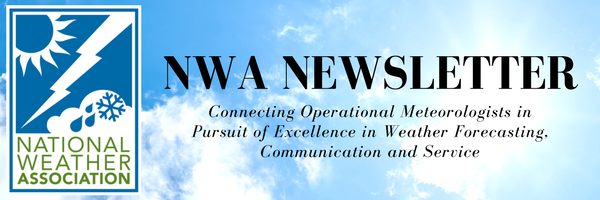
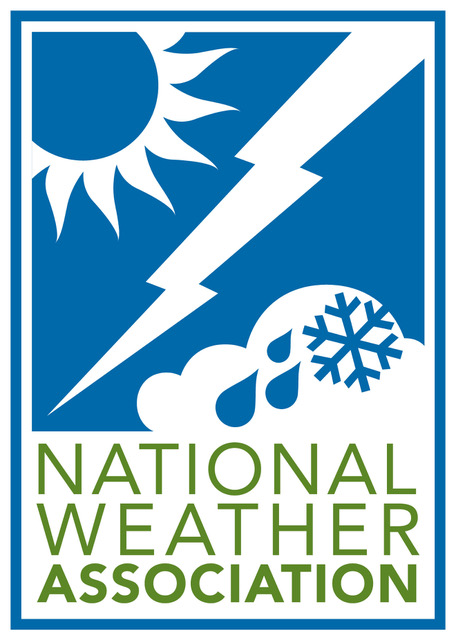
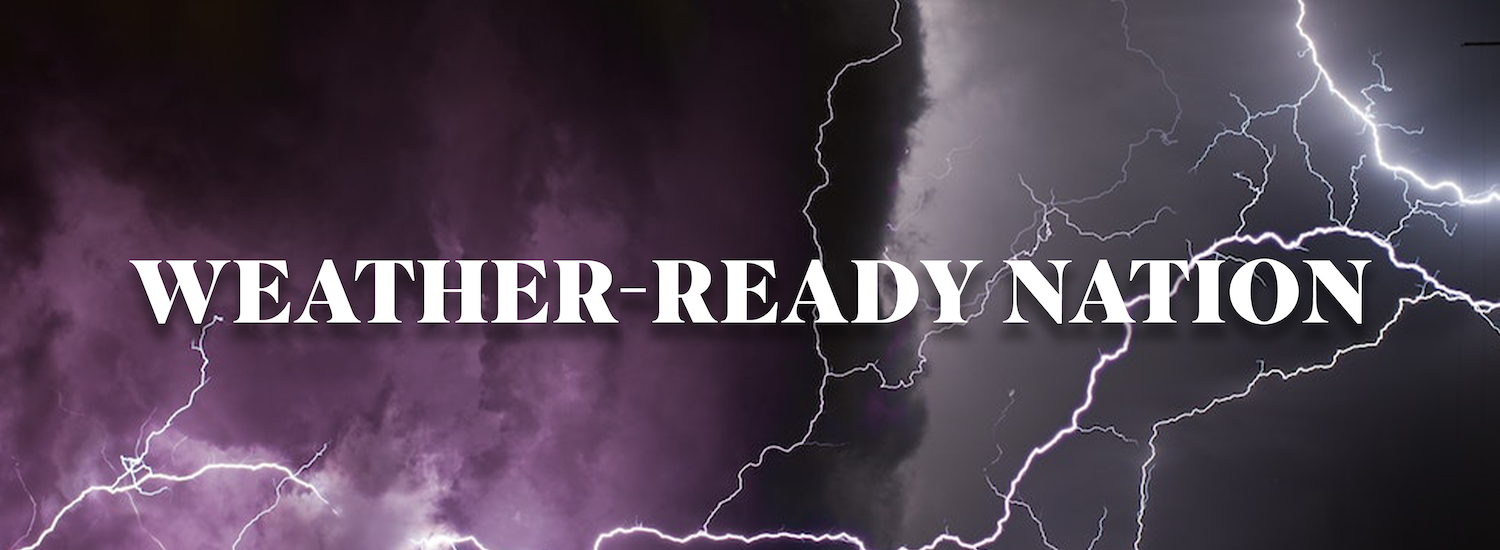
 We are winding down an eventful year, and like many of us, I find myself taking stock of the last 12 months while looking ahead at the year to come. Between the ongoing pandemic, economic changes, and more, there has been no shortage of challenges in 2021. There have been several times over the past two years when our finances could have taken significant pandemic-related hits. However, a proactive approach over that time helped us weather the storm and put us in a strong position for the future. Our membership numbers remain strong, and all of our key programs enjoyed an active year. Thanks to the leadership and hard work of the board of directors, our committees, and our headquarters staff, the National Weather Association is in a great place as we close out 2021.
We are winding down an eventful year, and like many of us, I find myself taking stock of the last 12 months while looking ahead at the year to come. Between the ongoing pandemic, economic changes, and more, there has been no shortage of challenges in 2021. There have been several times over the past two years when our finances could have taken significant pandemic-related hits. However, a proactive approach over that time helped us weather the storm and put us in a strong position for the future. Our membership numbers remain strong, and all of our key programs enjoyed an active year. Thanks to the leadership and hard work of the board of directors, our committees, and our headquarters staff, the National Weather Association is in a great place as we close out 2021.





 I recently wrote an NWA Newsletter article (October, 2021) for awareness of compassion fatigue: a long-term, elevated sense of emotional, physical, and/or spiritual distress at the witnessing of others’ suffering (Barnett 2014; Bolton 2021). I noted that amidst the COVID-19 pandemic and recent weather disasters, there seems to be a shift underway for many meteorologists towards this fatigued state, a turning away from the weather-related needs of the publics they serve. Here, I discuss aspects of care for meteorologists who are experiencing compassion fatigue.
I recently wrote an NWA Newsletter article (October, 2021) for awareness of compassion fatigue: a long-term, elevated sense of emotional, physical, and/or spiritual distress at the witnessing of others’ suffering (Barnett 2014; Bolton 2021). I noted that amidst the COVID-19 pandemic and recent weather disasters, there seems to be a shift underway for many meteorologists towards this fatigued state, a turning away from the weather-related needs of the publics they serve. Here, I discuss aspects of care for meteorologists who are experiencing compassion fatigue.









 The NWA congratulates Bob Dreisewerd on his new position, and we wish Mr. Bob Baron continued success with his non-profit Baron Critical Weather Institute and as Baron Weather Board Chair.
The NWA congratulates Bob Dreisewerd on his new position, and we wish Mr. Bob Baron continued success with his non-profit Baron Critical Weather Institute and as Baron Weather Board Chair.



